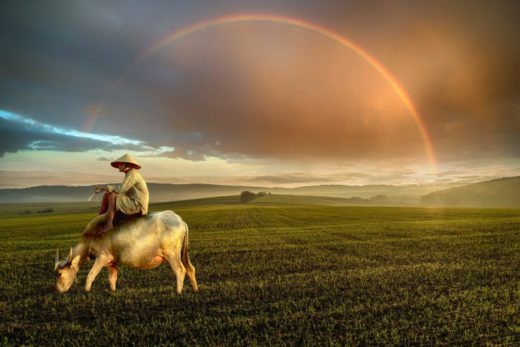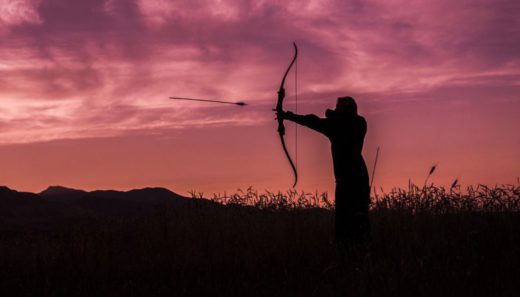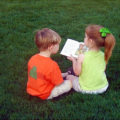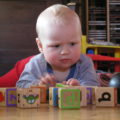Steps of Modeling
In the third part of this blog series, I will show you how the modeling process works and how to develop a Modeling-Protocol, a tool you can offer to others to model a certain skill or ability. This Modeling tool is the main part of NLP-Master training, and also a part of the exam. So, even though you are an NLP-beginner or didn’t start with NLP-education at all, you still will be able to learn this awesome NLP-technique.
In following, you will learn about the NLP modeling process from implicit, rather unconscious – to explicit, fully aware modeling, in four big and some smaller steps. If you want to go back to the prior article, click here!
The Prep
Preparing for modeling involves first off choosing a person who has the special ability you want to model, and second, the setting in which modeling takes place:
- Where and when should the modeling take place?
- What is the relationship to the modeled person?
- In which way does the modeling take place?
It also means creating the right conditions and setting up anchors, rescue islands and joker questions that will help you to fully embrace the project.
First Step: The Unconscious Entry
In the first step of the modeling process, involve the person to be modeled within an appropriate context in an example of the desired performance or ability.
Start modeling by going to the second position to intuitively get a feeling for the skills the person is showing. This is easily done without looking for any special patterns and outcomes.
Rather, just take the attitude and physiology of the model and try to identify with him or her inwardly. Just play and experiment.

Image: Pixabay
Sometimes it is better to take on the micro-muscular movements of the person instead of mirroring the obvious actions of the person. The obvious behavior of the model is only the surface of the skill.
Micro-muscle movements and changes in the second position will show you the way, how to penetrate the underlying deep structure.
Do not try to consciously understand what and why the model is doing something. Building filters can cause you to lose important information. You do not know yet what is important and what is not. In this step, it is often useful to start from a state of not knowing.
This is a state, in which all your previous mental maps and assumptions in relation to your own current experience are set aside.
When one enters a state of not knowing, he or she attempts to drop all previous presuppositions and form a fresh and unbiased opinion of a particular situation or experience.
When you realize that in the second position you have developed a good intuitive feeling for the person you are modeling, put yourself in a context where you can apply the skill you are studying.
Begin the skill within this context by trying out as if you were the person you are modeling. Then, achieve the same results by being in the first position what means being yourself.
This will give you a so-called double description of the skill you are modeling. When you have the same reactions as the model, the first modeling step is complete.
Second Step: Reduce all Findings to the Essentials
The next step in the modeling process is to sort out what is essential to the model’s behavior from what is irrelevant.
In this step, you begin to explicitly formulate the strategies and behaviors that you have modeled.
Since you are able to evoke similar reactions as the person you have modeled, you will also want to use your own behavior in the first position as a point of reference.
That is, playing out the skill as your own rather than as if you were the one who was modeled.
Your goal is to clarify and define the specific cognitive and behavioral steps required for the desired outcomes in the selected context.

Image: Pixabay
At this stage, you will also gradually and systematically omit parts of each of the behaviors or strategies you have identified to see what really makes a difference.
Everything you omit and whatever kind of response you get does not make any difference to the model.
If you omit something that makes a difference to the results you achieve, you have found something essential for the model. This procedure is called a subtraction process. Its purpose is to reduce the modeled steps to their simplest and most elegant form and to distinguish the essence from beliefs.
When you have completed this step, you will have a first draft of how you can reproduce the abilities of the model in yourself.
You will also have your intuitive insights from your second position on the abilities of the model you have developed by putting yourself in his or her position.
In addition, you will have a view from the third position that lets you see the difference between the way you reproduce the model’s abilities and the way your character shows that ability.
In NLP this is called a threefold description.
Third Step – The Modeling Protocol
In the final step of modeling, a process is designed that will allow other people to learn the modeled skills, and thus be able to achieve the results achievable for the modeled person.
For this protocol, you should synthesize the information you received from all three perceptual positions.
For example, rather than simply imitating the individual steps that the modeled person has gone through, it is generally most effective to provide the modelers with appropriate reference experiences.
This should be considered if you want to make the protocol available to other people for learning. In order to acquire the skill, it is not necessary for others to undergo the same modeling process that you have gone through.
With the help of the modeling protocol, another person can discover and develop the special tricks she or he needs to make for the skill work for them.
People learn differently. Therefore, they will have different conscious and unconscious competences as initial states.
This you should necessarily include in your protocol. For example, if a particular process that you have modeled requires visualization, some individuals may already be able to do it quite well. While for others, it can be a completely new experience and they will need more chunks.
Some people will be able to combine several steps in the process into one, while others will have to break a particular step into smaller sub-skills.
The guiding principles are the simplicity and the benefit of the protocol for the people for whom the modeling is intended.
I hope you enjoyed the three-steps NLP-modeling-process! Please, let me know what you think about it. Maybe you like to try? In every case, please take a couple of minutes and give me feedback!
If you have any questions, please, write them down and send them also! I would love to support you on your way!
Sending much Love and Light to you!
Aloha, Jenna
Live up to you!





Aloha Jenna!
I did once a 12 days training in NLP, i.e. 6 full weekends once a month. I’ve enjoyed it a lot, and the various tools have been integrated into my life, more or less.
I’ve been very interested in the modeling process all along.
One way to call it that I quite like is “Borrowed Genius”, i.e. the idea that one starts by copying and borrowing someone else’s skills before making them your own.
Reading through your protocol, I totally agree with it!
Next comes the hard part! Actually doing it!
For example, I’m an avid ice figure skater, but my progress is not as steady and fast as I would like.
I’m realizing now that I haven’t used the modeling/borrowed genius method all that much.
I can see why: from lack of confidence in my skills, I have difficulty imagining myself to be as good as the models I’m first thinking about.
However, I realize now I made some good progress lately when I saw some demo videos by people closer to my level. I could see it was a relatively small jump to imitate them.
Reading your article made me realize that maybe the jump in modeling highly skilled figure skaters could be meaningful for me, something to consider seriously.
I’ll let you know how it goes… and probably I’ll have some questions…
I’m also looking forward to reading more of your blogs soon! Cheers, Phil
Aloha Phil!
Just take a few minutes and allow yourself to imagine what if you would possess the ice skating skills of X-person? Please, fill in the name.
What does that person believe? What is her or his mindset? How is her or his approach?
And what if you would do what this person does on the ice, in your way, in your rhythm, always at the edge to a new experience, to more greatness? Just imagine. See yourself doing it. Hear the sounds of skates cutting into the ice surface. Feel the cool wind on your face created by your motions. Feel how effortless and easy it becomes to do the complicated jumps and figures.
The best learning is experience-based. You can read or listen to information, and feel motivated. But soon the details of the information will fade away and you will stay in your comfort zone. Maybe for a long time. This happened to many students – I consider all of us humans students – and this also happened to me many times.
Your comment inspired me to write and publish a shortened version of my modeling report to show how I did it. I modeled Vera F. Birkenbihl’s writing strategy. She was a known German trainer for learning and many other skills. She was also a researcher and spent her life improving herself and offering improvements to the world. Her publishing efficiency was breathtaking. She published about 450 books, training, audio courses, and other items. However, she was a constant, hard worker and sacrificed her health to her work.
So important by modeling to copy what is in alignment with us transfer it into our way.
Thank you very much, Phil, for visiting my website! I will let you know when I publish my modeling report.
Let me know if I can support you in any way? Let me know if you have any questions. I’m there for you!
Sending Love and Light!
Aloha back to you, Jenna
Aloha, Jenna!
Actually, I do know about Vera Birkenbihl, from the business of Paul Scheele, Learning Strategies Corporation. At some time in my life, I was eager to get every program he produced, many of them his own paraliminals, but also others he did in collaboration. One large program on memory with about 12 tapes was with Birkenbihl. To be honest, I did not complete her program, since I didn’t have memory issues, or at least I didn’t think I have, so this program was just not for me, and I gave it away. However, it did make me appreciate the importance of Birkenbihl in the German culture. I used to speak German (aber ich habe alles vergessen), so I was interested to hear her (she spoke English with a moderate accent) and about her.
In the past week, I’ve been giving myself the right to model other figure skaters, and this has been good for me. I feel like I am stepping up, being more comfortable with the whole experience. To give you an example, I’ve been watching a lot of 3-turns (which is a turn from skating in one direction, e.g. forward, to going into the opposite direction, e.g. backwards, and called this way from the shape of a 3 made in the ice) by other skaters, with all levels of quality, but now I’m starting to imagine myself with confidence doing it at a very high speed, which is what is required in all the more difficult dances that I am working on, like the Willow Waltz and the Ten-Fox.
To describe to you the feeling, it’s a bit like the turn itself takes no time: in one instant, you are skating forward, in the other instant, backward, and there is no time in between, because the turn is so sharp, and also nearly noiseless.
I’ll keep you posted about it, but for now I’m going to address another article of yours…
Bye for now, Phil
This is fantastic, Phil! AWESOME PROGRESS! Modeling is all about mind and feelings. You need to know (to really know, be absolutely sure) that you can do the turn, and that you will do it. When you watch figure skaters you could choose one of them to model him, who is just one or two steps above your own level. This is the startup. Why only one or two steps? Because it wouldn’t overwhelm you, and it is also safer and more enjoyable when your mind and body skills are in alignment with each other. VFB, the abbreviation how Vera Birkenbihl signed her articles, stressed that the flow is created when you go just a little bit above of your current learning level. So, when you feel settled down in a certain motion, just add a little bit more, speed or one more movement. See yourself accomplishing the figure, first in slow motion than faster, and fast … When you move on then to the higher level skaters, you could also feel in that person, move like that person, have a facial expression like that person. And if you know some cool phrases that that person uses to push himself, you could use them too. BtW: I never became a good skater. I can skate some … haha but I loved to watch figure skating and dances. Beautiful. All in alignment, wonderful body control … mostly 😉
How wonderful, Phil, that you know Vera Birkenbihl’s work! She was a great thinker! Intellectually there was nothing that she wouldn’t be willing to try. She even learned some Mandarin, High Mathematics, and so on. I learned French with her audio course before going on a Grand Alp trip by a motorcycle. Some French hosts, where we stayed overnight, were impressed by my French understanding. Unfortunately, I couldn’t respond in a proper way. Haha. Didn’t learned enough for that. Do you know that VFB couldn’t finish high school in Germany because she didn’t pass in English? After that, she went to the USA, studied there and brought brain-friendly learning back to Germany.
Thank you very much for using my website and those powerful tools. I used them many times and they helped me a lot on my way too.
Very happy about it, Phil!
Sending much Love and Light on your way for all you need!
Aloha, Jenna